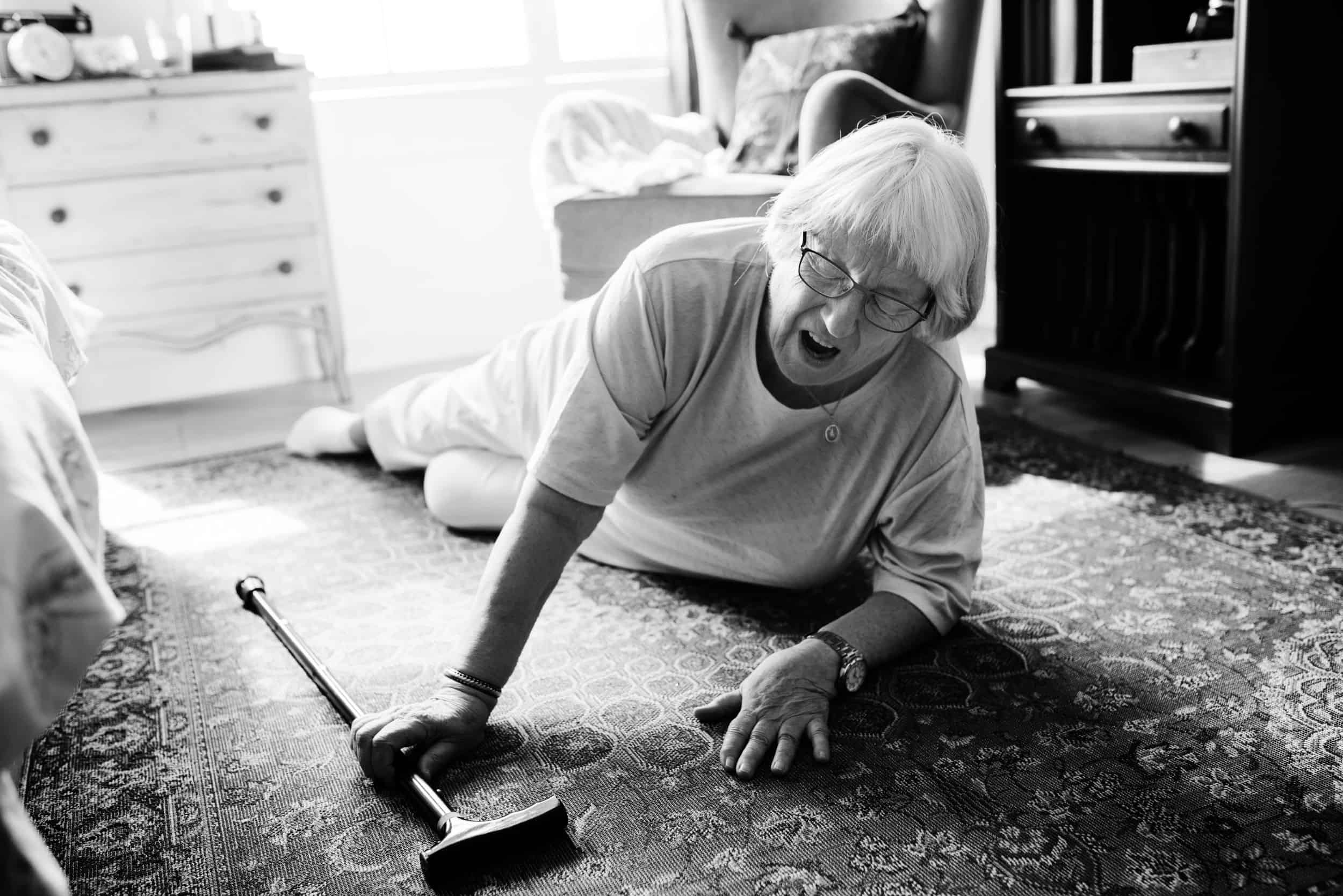Maybe it’s an aging parent. A spouse or a close friend. Whoever it is, you’re worried your loved one’s risk of falling has become serious.
Maybe they’ve already fallen.
You’ve tried to bring up the topic of getting a cane or walker. Were they interested? Maybe down the road, they said. It’s too early to be thinking about that.
You might disagree, but consider how you would feel if you were them.
You might not be thrilled to discuss the ways your body is letting you down. Aging and physical deconditioning aren’t fun dinner table topics. We all want to feel as able as possible.
But the risk of serious injury is real. How do you talk about this with your loved one? Here are 12 tips on broaching the subject with them (or, if it’s you who’s at risk, consider these tips on how to talk to yourself.)
1. Acknowledge the disadvantages.
There’s no sense arguing over the truth. Mobility aids are a visible sign that you need help. Many people feel like they’re flashing a neon sign to the world that says, “I’m officially old now.”
Others may treat you a little differently. Moving through doorways, down aisles and through crowds with a mobility aid will take getting used to. All of this will get easier in time. But the loved one you’re trying to convince to get a mobility aid is right: change is uncomfortable.
2. Emphasize the advantages.
On the other hand, we all need help to get through life. Feeling self-conscious about that shouldn’t get in the way of getting what we need, especially when it can be life-changing.
Mobility aids:
- Help keep people upright and healthy. Exercise is essential to slowing the physical deconditioning that can lead to permanent disability.
- Provide social comfort. When attending parties, walking with friends, or exploring museums with family, people tend to feel more comfortable when they can meet others at eye level.
- Enable activities of daily living. While your loved one may be able to care for themselves at home and in public now by moving carefully and slowly, mobility aids help keep them independent in the future.
In short, they support ongoing independence and all the benefits that come with it.
3. Consider statistics.
A little straight talk is necessary when you’re talking about safety. Consider the seriousness of the matter in terms of statistics.
- You want to maintain your independence.
50% of older people who have a fall-related injury will be admitted to a nursing facility, instead of going home. - As you get older, the risk of injury only increases.
1 in 10 falls in people over 85 results in a fractured hip. - The risk of death increases, too.
25% of those who fracture a hip over the age of 85 die within 6 months of the injury.
Don’t over-emphasize numbers like these, though. You’re not trying to scare or manipulate anybody, just take an honest look at reality.
4. Discuss options and preferences.
There are many different types of mobility aids out there, many different versions of canes, walkers, reverse walkers, and rollators.
Present some options. Talk about what matters in terms of functionality. Consider that they may want to select a few different mobility aids to use in different situations.
What will offer:
- Stability?
- Maneuverability?
- Upright posture?
- Easy storage?
And so on.
5. Consider a variety of styles.
Your loved one may have an antiquated image of a big, clunky walker in mind. Or a big, wooden cane they imagine hunching over, chin-over-hands as they shuffle around.
They may not know that modern mobility aids aren’t institutional products that live in hospital closets. They are consumer products that come in a variety of materials and styles, and one may suit their taste more than they think.
6. Point out that attitudes are changing.
It’s normal for your loved one to feel a bit nervous that using a mobility aid will be embarrassing, but it likely won’t be as bad as they think. There’s a strong movement today to normalize them.
A few years ago, actress and writer Lena Dunham was photographed using a cane. She has a chronic illness that weakens the body’s connective tissues called Ehler-Danlos syndrome and sometimes needs support to keep steady.
“I could choose to be embarrassed by these paparazzi pics […] but I’m really not,” she wrote on Instagram.
For years, I resisted doing anything that would make my physical situation easier, insisting that a cane would ‘make things weird.’ But it’s so much less weird to actually be able to participate than to stay in bed all day.
People today are far more likely to understand that those who use mobility aids aren’t “weird” or objects of pity. They’re just living life. If putting glasses on to be able to see clearly isn’t weird, neither is grabbing a mobility aid so you can walk safely.
7. Check out how others personalize theirs.
Along with normalizing mobility aids has come a trend to personalize them. Like headwear, neckwear and handbags, people are starting to treat mobility aids like fashion accessories.
Hannah Hoskins, a fibromyalgia sufferer, is advancing this trend. She created a Facebook group called Pimp My Mobility Aid to teach others how to customize their canes, walkers and rollators.
Maybe your loved one fancies camo? Leopard print? A floral theme? The colors of their favorite sports team? There are endless ways to turn something they’re anxious about being seen with into something they might be proud to be seen with!
8. Bring in a professional.
From your perspective as a caregiver, you might find it a relief to consult with a doctor (perhaps your family MD), physical therapist or mobility device expert who can offer advice.
From your loved one’s perspective, the risk might not seem significant enough until a professional confirms it. They should also be able to answer far more questions than you can.
9. Make a deal.
Suggest taking one step rather than committing all the way. Visit a mobility store. Try out some mobility aids. Maybe even purchase one on a 30-day trial.
The deal is, if they don’t like it, you’ll try something else. No pressure.
10. Point out friends and acquaintances who use one.
Nothing normalizes the use of mobility aids more than recognizing that people you know and respect use them.
Don’t try to compare ailments. The point is that people can and do live happy, productive lives with mobility aids – and with the proper ones, they are safer and healthier as well.
11. Be encouraging.
Tell them they can do this. That they can be happy, grow healthier and remain independent with the right mobility aid.
Believe in them, and they’ll be more likely to believe in themselves.
12. Take a look at the LifeGlider.
For anyone whose ideas about mobility aids are antiquated or exaggerated – heavy, bulky devices that turn you into a hunchback – nothing will surprise them more than the LifeGlider.
- Upright walking. No hunchback-encouraging here.
- Fall-safe. They’ll feel more stable than with any traditional walker or rollator.
- Hands-optional. It attaches at the waist, so not only don’t they have to hold on but they’ll also free their hands to do other things – like shop, cook, or even dance.
Because of its sleek design and the way it enables active lifestyles like no other mobility aid, just introducing them to the LifeGlider will go a long way in convincing them to get the help they need.
Want to learn more? Just reach out and ask.
We’re here to support you and your loved one – in more ways than one!



